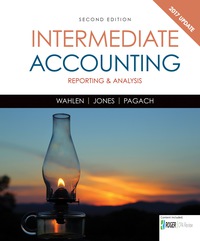


 **You Must Answer All Parts of the Question As its part of one question**
**You Must Answer All Parts of the Question As its part of one question**
Flexible Budget, Standard Cost Variances, T-Accounts Ingles Company manufactures external hard drives. At the beginning of the period, the following plans for production and costs were revealed: Units to be produced and sold 25,000 Standard cost per unit: Direct materials $ 10 Direct labor 8 Variable overhead 4 Fixed overhead 3 Total unit cost $ 25 During the year, 24,800 units were produced and sold. The following actual costs were incurred: Direct materials Direct labor $263,872 204,352 107,340 73,904 Variable overhead Fixed overhead There were no beginning or ending inventories of direct materials. The direct materials price variance was $9,572 unfavorable. In producing the 24,800 units, a total of 12,772 hours were worked, 3 percent more hours than the standard allowed for the actual output. Overhead costs are applied to production using direct labor hours. Required: Instructions for parts 1 and 2: If a variance is zero, enter "0" and select "Not applicable from the drop down box. 1. Prepare a performance report comparing expected costs to actual costs. Ingles Company Performance Report Cost Items Actual Costs Budgeted Costs Variance Direction Direct materials 263,872 248,000 15,872 Favorable Direct labor 204,352 198,400 5,952 Favorable Variable overhead 107,340 99,200 8,140 Favorable Fixed overhead 73,904 75,000 1,096 Favorable $ 649,468 620,600 31,060 Favorable 2. Determine the following. If a variance amount zero, enter "O' and select "Not applicable" from the drop-down list. a. Direct materials usage variance 6,300 Favorable b. Direct labor rate variance $ Favorable 2. Determine the following. If a variance amount is zero, enter "0" and select "Not applicable" from the drop-down list. a. Direct materials usage variance $ 6,300 Favorable b. Direct labor rate variance $ 0 Favorable c. Direct labor usage variance $ Favorable d. Fixed overhead spending and volume variances Spending variance $ Favorable Volume variance Favorable e. Variable overhead spending and efficiency variances Variable overhead spending variance Favorable Variable overhead efficiency variance Favorable 3. Use T-accounts to show the flow of costs through the system. In showing the flow, you do not need to show detailed overhead variances. Show only the over- and underapplied variances for fixed and variable overhead. Record the following transactions in the T-accounts: If an amount is zero, enter "0". (a) purchase of materials, (b) issuance of materials into production, (c) incurrence of direct labor cost, (d) application of variable overhead cost to production, (e) application of fixed overhead cost to production, (f) transfer of finished goods to finished goods Inventory, (9) sale of goods, (h) closure of Direct Materials Price Variance account, (i) closure of Direct Materials Usage Variance account, 6) closure of Direct Labor Efficiency Variance account, (k) closure of Variable Overhead Control account, and (1) closure of Fixed Overhead Control account. Enter these transactions in the T-accounts in the same order that they are presented here. Flexible Budget, Standard Cost Variances, T-Accounts Ingles Company manufactures external hard drives. At the beginning of the period, the following plans for production and costs were revealed: Units to be produced and sold 25,000 Standard cost per unit: Direct materials $ 10 Direct labor 8 Variable overhead 4 Fixed overhead 3 Total unit cost $ 25 During the year, 24,800 units were produced and sold. The following actual costs were incurred: Direct materials Direct labor $263,872 204,352 107,340 73,904 Variable overhead Fixed overhead There were no beginning or ending inventories of direct materials. The direct materials price variance was $9,572 unfavorable. In producing the 24,800 units, a total of 12,772 hours were worked, 3 percent more hours than the standard allowed for the actual output. Overhead costs are applied to production using direct labor hours. Required: Instructions for parts 1 and 2: If a variance is zero, enter "0" and select "Not applicable from the drop down box. 1. Prepare a performance report comparing expected costs to actual costs. Ingles Company Performance Report Cost Items Actual Costs Budgeted Costs Variance Direction Direct materials 263,872 248,000 15,872 Favorable Direct labor 204,352 198,400 5,952 Favorable Variable overhead 107,340 99,200 8,140 Favorable Fixed overhead 73,904 75,000 1,096 Favorable $ 649,468 620,600 31,060 Favorable 2. Determine the following. If a variance amount zero, enter "O' and select "Not applicable" from the drop-down list. a. Direct materials usage variance 6,300 Favorable b. Direct labor rate variance $ Favorable 2. Determine the following. If a variance amount is zero, enter "0" and select "Not applicable" from the drop-down list. a. Direct materials usage variance $ 6,300 Favorable b. Direct labor rate variance $ 0 Favorable c. Direct labor usage variance $ Favorable d. Fixed overhead spending and volume variances Spending variance $ Favorable Volume variance Favorable e. Variable overhead spending and efficiency variances Variable overhead spending variance Favorable Variable overhead efficiency variance Favorable 3. Use T-accounts to show the flow of costs through the system. In showing the flow, you do not need to show detailed overhead variances. Show only the over- and underapplied variances for fixed and variable overhead. Record the following transactions in the T-accounts: If an amount is zero, enter "0". (a) purchase of materials, (b) issuance of materials into production, (c) incurrence of direct labor cost, (d) application of variable overhead cost to production, (e) application of fixed overhead cost to production, (f) transfer of finished goods to finished goods Inventory, (9) sale of goods, (h) closure of Direct Materials Price Variance account, (i) closure of Direct Materials Usage Variance account, 6) closure of Direct Labor Efficiency Variance account, (k) closure of Variable Overhead Control account, and (1) closure of Fixed Overhead Control account. Enter these transactions in the T-accounts in the same order that they are presented here



 **You Must Answer All Parts of the Question As its part of one question**
**You Must Answer All Parts of the Question As its part of one question**





